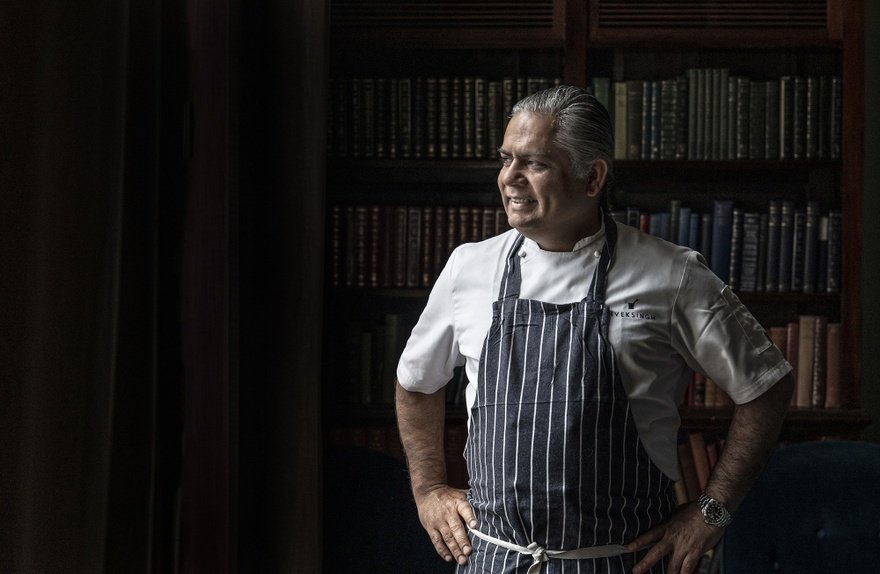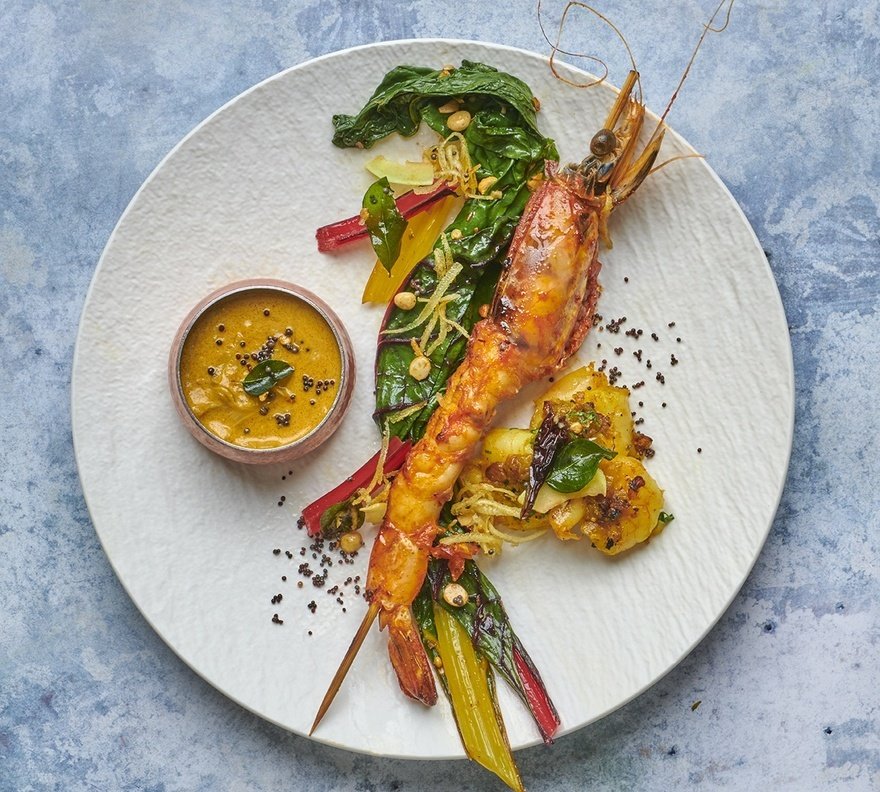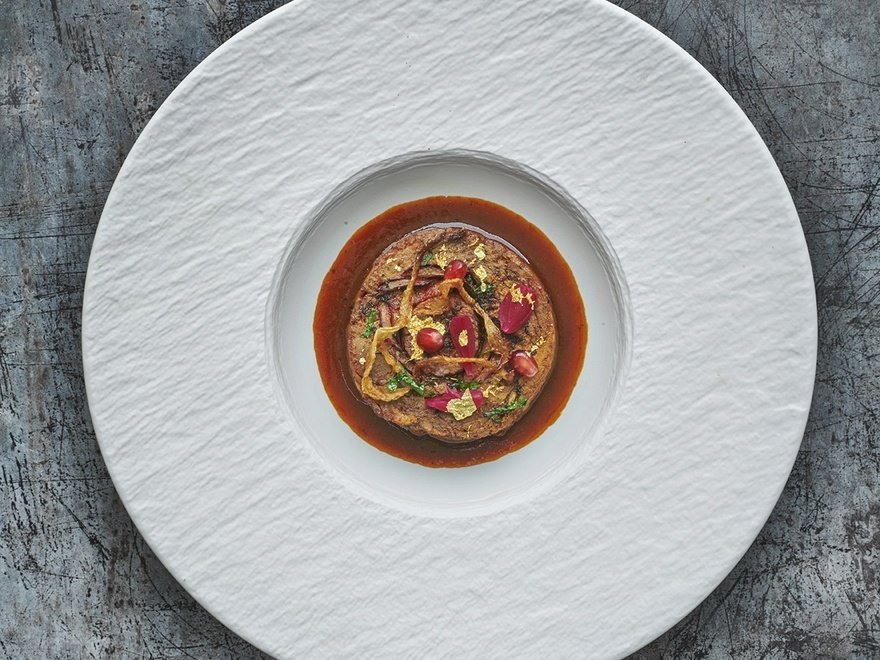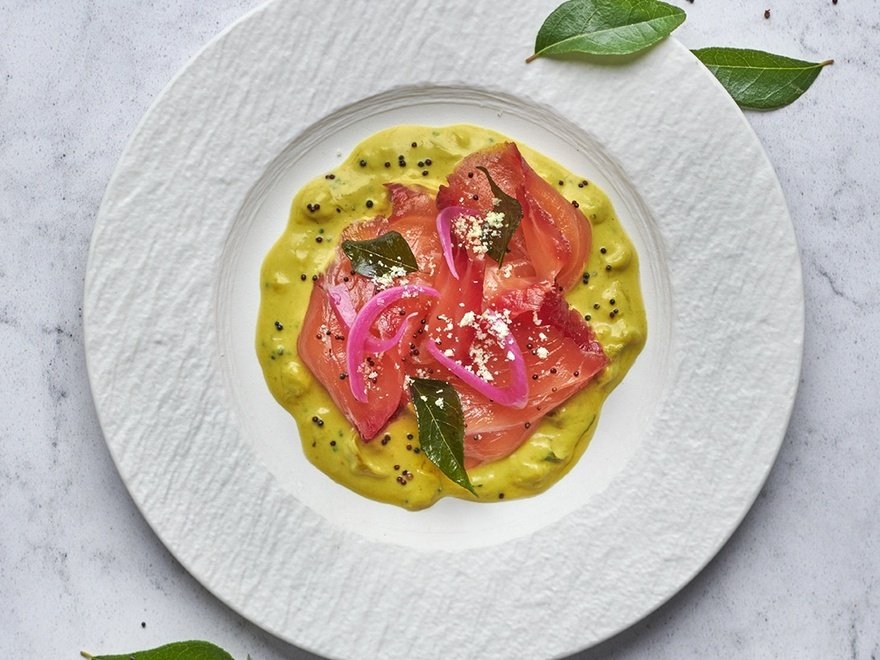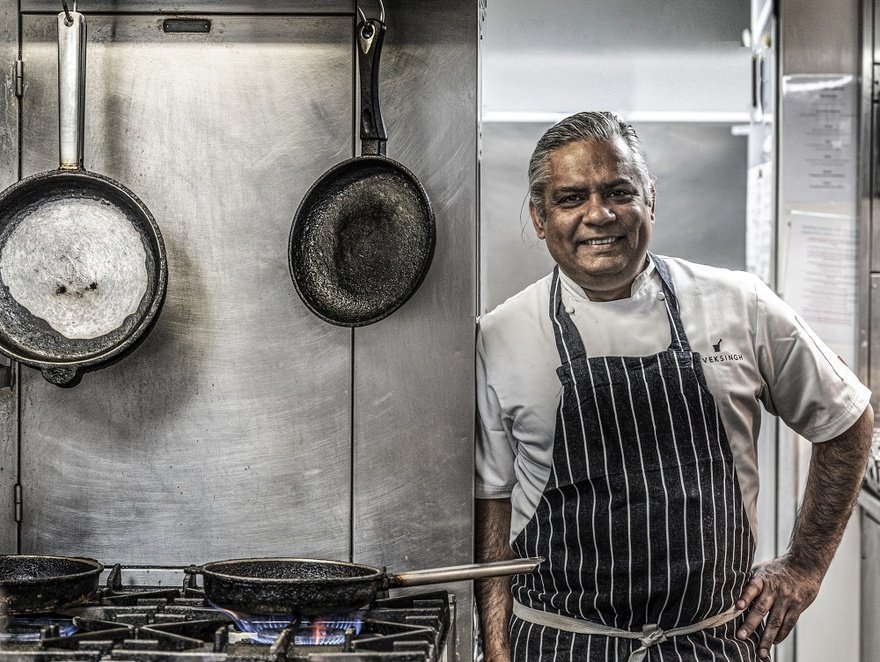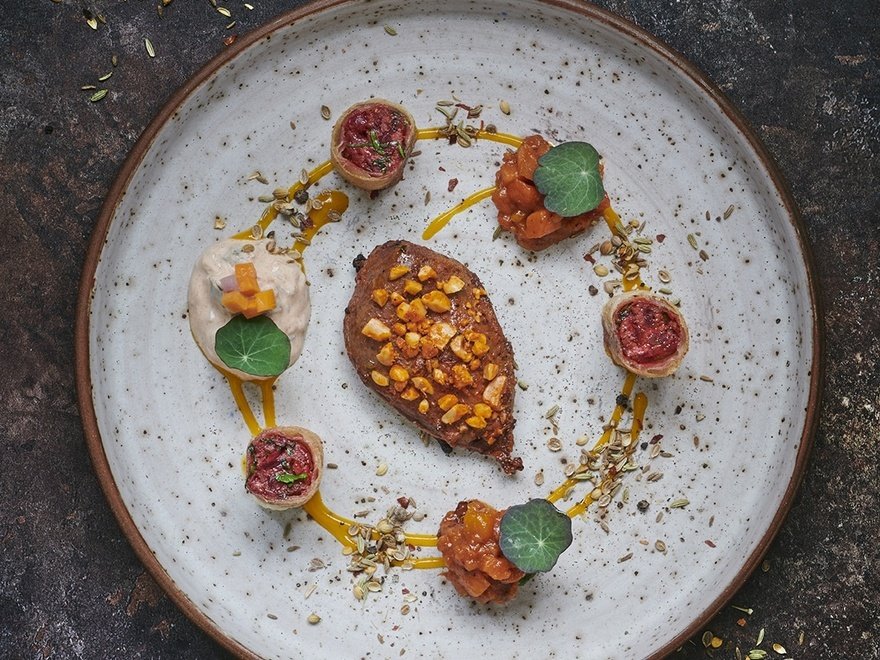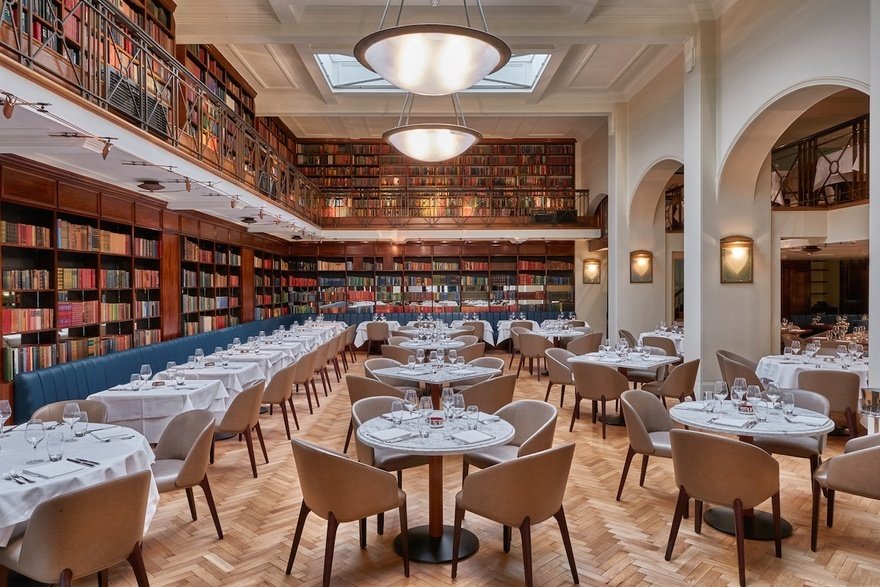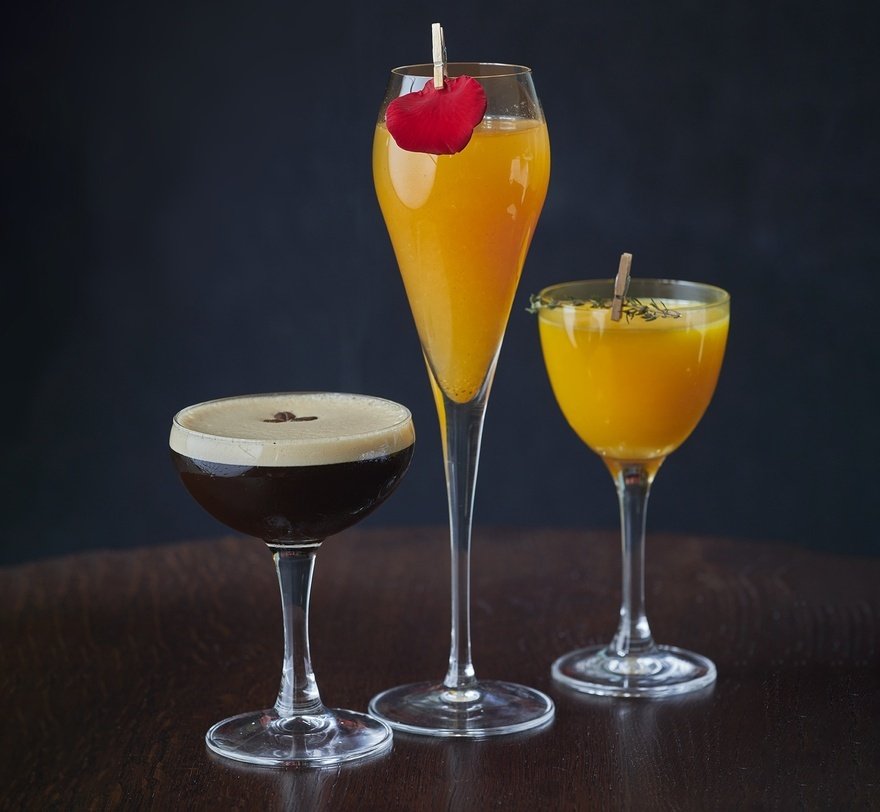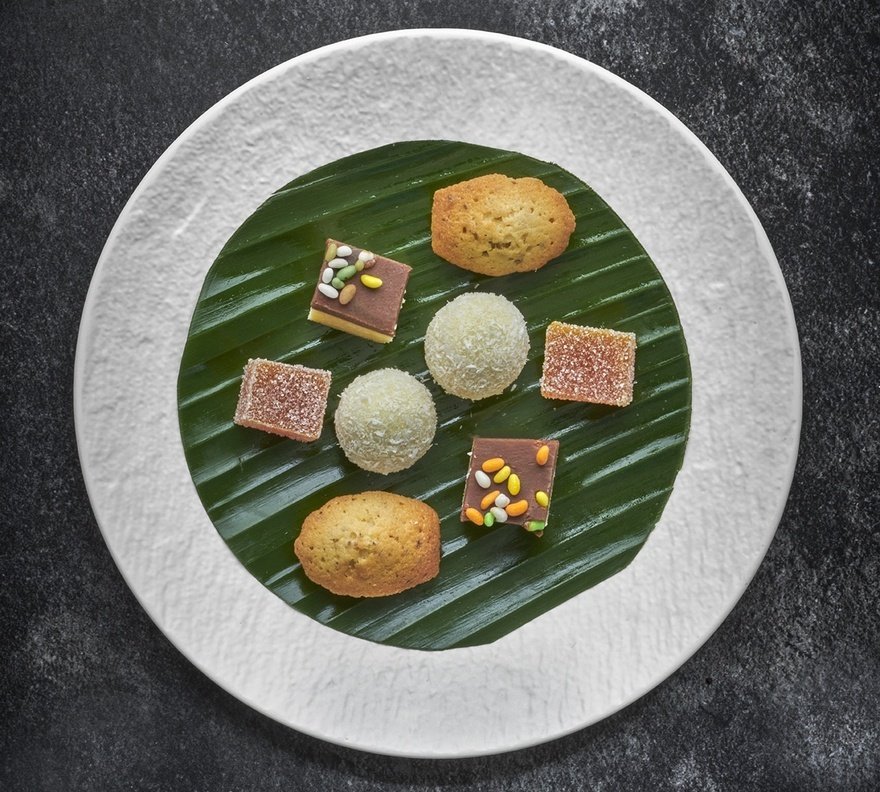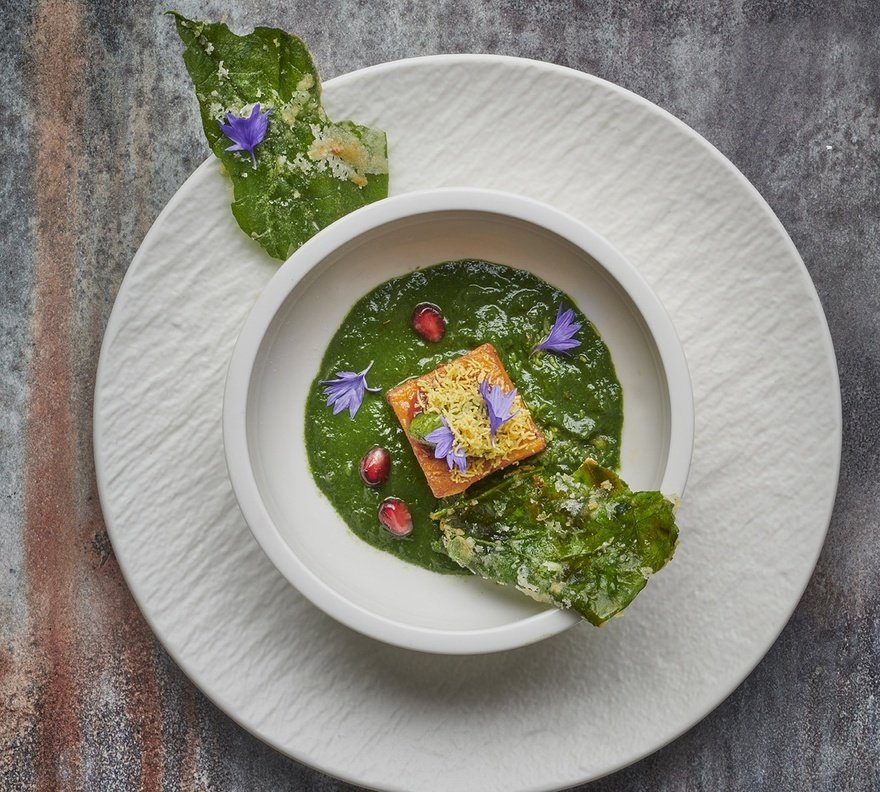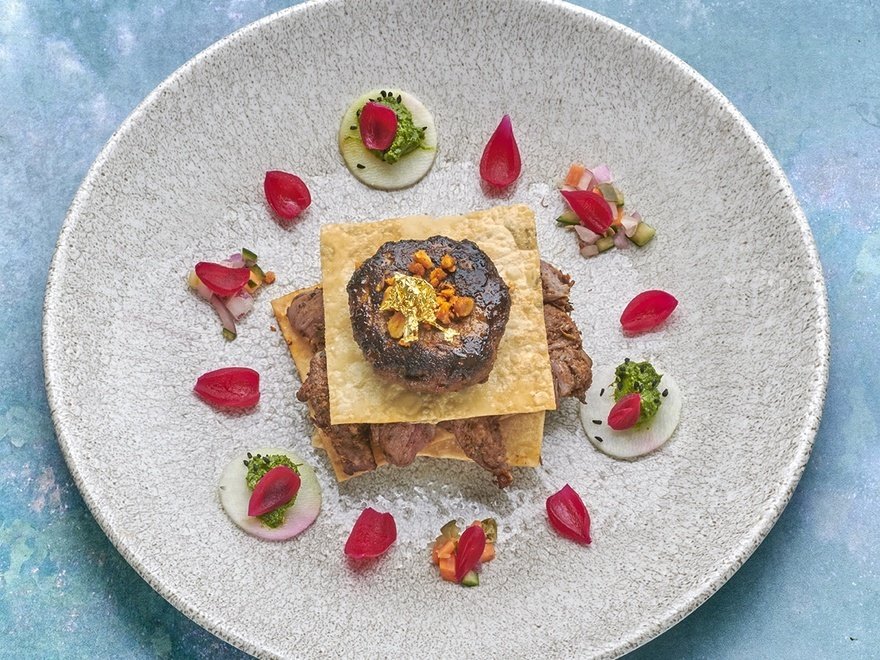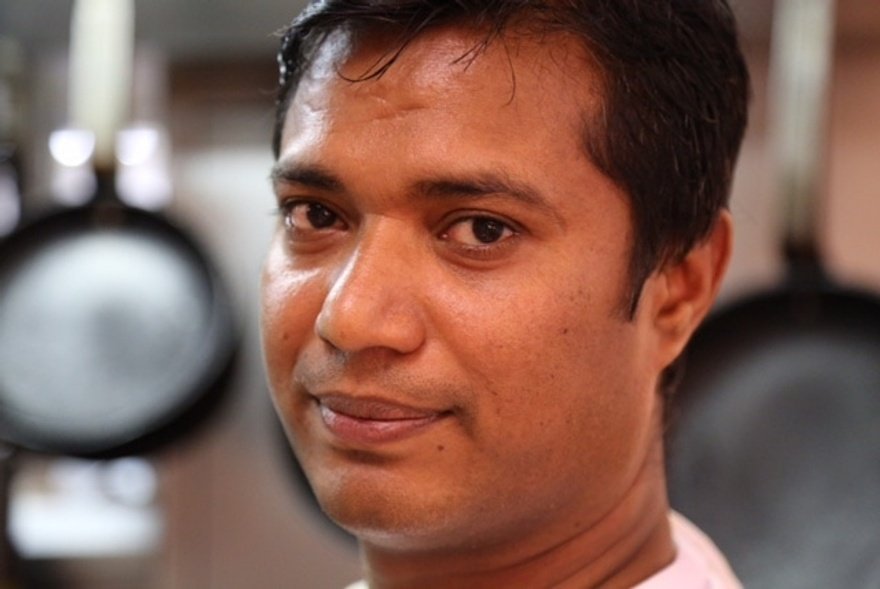Chef Vivek Singh is celebrating 20 years of the Cinnamon Club, but the journey is far from over. He speaks to Caroline Baldwin about breaking the mould for Indian restaurants in the UK, telling guests what they should want and how he's ensuring longevity for his growing restaurant collection.
The Cinnamon Club first opened its doors at the historic, Grade II-listed former Westminster Library on 21 March 2001 – and what a 20 years it has been for chef-patron Vivek Singh and his team. Thanks to this tenacious chef, the Cinnamon Club has redefined Indian food over the last two decades, inspiring a raft of restaurants to serve Indian food with a fine-dining or modern twist, including Gymkhana, Darjeeling Express and Dishoom.
"I can't take any credit for the love, affection and appreciation for Indian food that is so deeply ingrained in the British psyche – that was already there before we launched the Cinnamon Club," explains Singh. "However, the terms ‘Indian' and ‘fine dining' weren't words you'd ever hear in one sentence. It just didn't exist."
When the Cinnamon Club launched, the big-name London institutions included Nobu, Le Caprice and the Ivy, with Hakkasan opening a few months later. At the time, says Singh, there wasn't a single Indian restaurant that had broken into the mainstream London restaurant scene.
"It broke the mould of what people expected from an Indian restaurant. It pushed the boundaries and exploded the glass ceiling, particularly in how people perceived Indian food and how much money they would spend on it."
But it hasn't been an easy two decades. And the first challenge was convincing guests to pay fine dining prices for Indian food, when "going out for an Indian" was considered a cheap and cheerful Friday night at your local restaurant, fuelled by bottles of lager.
"People loved Indian restaurants as they were, where you'd pay £15 a head for a meal. The whole idea of a dish at £18-£20 was considered audacious," he chuckles.
"A very common question I was asked by guests – and it had no malice and I took no offence at the time, but I would seethe underneath – was ‘We Brits know our rogan josh, we don't expect much from it, so why are you doing this?'" he recalls.
"Meanwhile, Indian people would ask me: ‘We love Indian food – my maid, or my mother-in-law or my auntie makes the very best dal makhani and nobody can make it better, so why should I spend money on this?'
"It was not about the money, because it was absolutely fine to spend £100 a head at Nobu – but not at an Indian restaurant. And our prices weren't even as much as Nobu or [Gordon] Ramsay's. But my fishmonger was the same one that Ramsay used – I would be buying the same halibut and possibly even paying a little more, because I'd have to fight for it. The meal was two-thirds of the price, and it was a bigger piece of fish, so I couldn't understand why this was even a question."
The ever-determined Singh says it took the majority of the business' first year to convince diners to try Indian meals with which they were unfamiliar and pay a higher price point. Quite often, he says, tables would turn up and demand a saag aloo, despite it not even being on the menu.
"They say you should give people what they want, but I look back and think we weren't giving people what they wanted: we were telling people what they wanted. It was a counter-intuitive way to open a business, but to still be around 20 years later and be relevant and have a following, you have to stick by your guns."
We weren't giving people what they wanted: we were telling people what they wanted
Trend-setters and taste-makers
Since that initial hurdle, the Cinnamon Club – which was Singh's first London restaurant, after working in several hotels in India – has gone on to reshape the fine dining scene in London, becoming the original modern Indian restaurant in the city. Guests began to flock to the Old Westminster Library, with its double- height ceiling and walls lined with books, which is still as regal today as it was 20 years ago. "The library feels like a gentleman's club," says Singh. "It's my favourite dining room; there are very few rooms in London like this."
Aside from the grand setting, one of the reasons Singh believes his restaurant has remained relevant is because he continually shakes up the menu. The chef admits that after finally convincing guests his way of cooking Indian food was good enough to pay high-end prices, taking off the most popular dishes probably was a bit of a risk.
"I never used to take off the dish that sold the least; if a dish became too popular and was taking over the menu, I would take it off. We'd have diners who would arrive and wouldn't even look at the menu, and when they tried to order the rogan josh lamb shank, my maitre d' would say ‘Sorry sir, but you haven't looked at your menu – there is no lamb shank today'.
If a dish became too popular and was taking over the menu, then I would take it off
"Look, I love a good butter chicken, but it's as easy to fall in love with a dish as it is to fall out of love with it. When our chefs cook the same dish 40 times every night for six months: fatigue sets in and they stop noticing the mistakes and missing the beats. If I have a curry on the menu, I want it to be the best it can be and then move on from that."
This self-proclaimed, stubborn, "telling people what they want" mentality even trickles down into the reason behind why the Cinnamon Club is a "poppadom-free zone".
"I want people to take notice and consideration of their starter and main choice," says Singh, which he believes customers can't do if they're already tucking into chutneys the moment they sit down. "There were a lot of battles to be won and behaviours to change, but we've done it and we're proud of it."
There were a lot of battles to be won and behaviours to change over a period of time, but we've done it and we're proud of it
No jacket required
This attitude combined with his menu today attracts a mix of guests, and Singh says it has been a real "labour of love" to have the dining room as diverse and varied as it is today.
"It's not something that happened overnight. For the first six years I don't think I ever saw someone without a jacket – it was mostly political journalists, bankers and business dinners. It was the peak of the market, the big boom. In fact, my teams had such disdain for the weekend crowd, because these people spent little, had high expectations and were very high maintenance. I'd say it's the same people, paying the same prices, for the same menu – we've just got to adapt."
Singh says in the early days the restaurant never offered a complimentary pudding with a candle for anniversaries or birthdays. "It just wasn't the type of thing that was done, but I thought it would be a nice touch to make a separate special dessert people could receive without asking for it. My team couldn't say no to me, but they clearly weren't happy about it, because every Friday and Saturday we'd have 14 tables of birthdays that didn't order dessert. But at the time, there were thousands of London restaurants on TripAdvisor and I said to them, ‘If you think my free dessert is bringing them in, then I'm happy to do it'."
A year or so later, 2007 came along, and the financial crash hit the City boys hard – and their expense accounts even harder.
"We hadn't realised at the time what level of future-proofing we were doing for the business, because Wednesday or Thursday was no longer the biggest corporate entertaining nights; instead Friday and Saturday were completely off the scale."
Had it not been for this "weekend crowd", Singh says the Cinnamon Club wouldn't have survived the crash. And it's this mix of dinner jackets and smart-casual that is the lifeblood of the establishment today, which has gone on to win accolades including Restaurant of the Year at the World Food Awards in 2009 and has attracted a number of high-profile celebrities.
"My favourite moment is when we had to turn Mick Jagger away because we were fully booked. It always makes me laugh when I think about it," says Singh, who doesn't disclose whether Jagger was a jeans or dinner jacket diner.
Spice world
Singh went on to launch a number of restaurants, including Cinnamon Kitchen City in 2008, Cinnamon Soho in 2012 (since closed) and Cinnamon Bazaar in 2016 (winning a Bib Gourmand in 2018), as well as outposts of Cinnamon Kitchen in Oxford (since closed) and Battersea in 2017 and 2018, creating the Cinnamon Collection.
"You think you've got one right, but each is different. It's almost like a different child – it's a slightly different experience and I would never recommend someone to mimic an experience over and over again. That's why there's only one Cinnamon Club."
I would never recommend someone to mimic an experience over and over again. That's why there's only one Cinnamon Club
Over the last 20 years, Singh says he has navigated several challenges, including working seven days a week for six months when he first opened, but no challenge has been as large as Covid-19. "I'm so pleased to still be bouncing about," he says. "It was hard work, but we pretty much held onto every member of the team."
Yet again, he was unknowingly futureproofing his business when four years ago Singh took service charge off the bill and ensured the price of food and drink paid the teams' base salaries. "I wanted to guarantee their wages. When Covid and furlough came, a lot of the industry was really suffering due to HMRC's view of tips, but our [furloughed] people got 80% of their annual salary and were really looked after – it's an honest way of operating."
During lockdown, Singh and his team also launched a range of meal kits, which were lapped up by the restaurant's loyal fans. "That love was phenomenal and kept us going, but setting it up at first felt like brain surgery."
He intends to keep the meal kits going as an additional revenue stream, due to the likelihood that people will be in the office less than before the pandemic. "We have a small business, but a good brand. Some of the people on our database have been there for 12, 15, or 18 years – they're like family, why would I want to lose them?"
Following a busy few weeks after reopening, Singh says bookings are starting to settle down with Cinnamon Club reservations past 75% of where they were in 2019. And what about the next 20 years? "Well, I hope it will still be here. I can't think of it not [being around], as long as it remains relevant," he says.
He and the Cinnamon Club customer have come a long way, but Singh believes it has only just begun. "Guests have become adventurous only because they've been taken on a journey," he says, noting how the average diner now understands the difference between tandoori dishes and those from the Keralan coast.
Singh says when he looks back to 20 years ago, he didn't think the Cinnamon Club was particularly radical. "But at every point in history, some things will remain the same – comfort food, which is familiar with heart and soul – and others will be constantly pushing boundaries and creating new experiences. I think there will be a place for both. And people will come back again and again, and we have a responsibility to give people new experiences. If we don't, somewhere down the line we fail.
"I'm an eternal optimist. We're turning a corner and the ways we find may not be what we're used to previously – but hey, that's life. Change is the only constant and standing still isn't an option."
Then and now
Launch date 21 March 2001
Covers Then: 230; now: 210
Size of brigade Then: 10 chefs; now: 19 chefs
Set menu price Then: £19 for two courses, £22 for three; now: £25 for two courses, £30 for three.
Tasting menu price Then: £45 for six courses/ now: £85 for eight courses
À la carte price Then: £35 per head; now: £65-£70 per head
Bestselling dishes "One of the bestselling dishes that has always been on the menu is our halibut, which was one of the first dishes on our original menu. But more recently, we've become known for our game dishes, so now our signature venison and pigeon dishes are very popular."
20th anniversary menu
- Canapé Pithog saag: chickpea and yogurt gnocchi, spinach crumble, tamarind and coriander chutney
- Appetiser Carpaccio of home-cured Shetland salmon, mustard caviar, curry leaf snow (2019 Grüner Veltliner Straßertal, Waldschütz, Kamptal, Austria)
- First starter Clove-smoked Anjou pigeon, pumpkin, peanuts (2016 Pinot Noir Map Maker, Staete Landt, Marlborough, New Zealand)
- Second starter Spiced lamb mille-feuille (2013 Syrah Barrel Selection, Fabre Montmayou Patagonia, Argentina)
- Rest course Yuzu sorbet
- First main course Grilled Spencer Gulf king prawns, Alleppey curry sauce (2012 Muscadet Les Schistes de Goulaine, Loire, France)
- Second main course Tandoori-spiced Balmoral Estate venison, black stone flower reduction (2015 Amarone della Valpolicella Classico Podere Cariano, Le Bertarole Veneto, Italy) or Cinnamon Club's 20th anniversary special raan: slow-braised lamb leg, nutmeg and pepper sauce
- Dessert Alphonso mango kulfi, mango mint salad (2016 Saussignac Vendange d'Autrefois, Gascony, France)
£85 per person, £170 with premium wines
20th anniversary lamb dish from prep to plate
While Singh struggles to choose a favourite dish from the past 20 years, he is especially proud of the 20th anniversary special slow-braised lamb shoulder with nutmeg and fennel sauce. He explains how he makes it:
- Rub a lamb leg with a marinade of garlic, Kashmiri red chilli powder, salt, dark malt vinegar, sugar and crispy fried onions. Place the lamb in a deep baking tray scattered with bay leaves, cinnamon sticks and black cardamom pods and enough water to cover three-quarters of the lamb.
- Cook in a low oven for around three hours, until the meat falls off the bone.
- Strain and reserve the cooking liquor, add tomato purée and slowly reduce to a thick sauce, before adding pepper, nutmeg, fennel and cream. Whisk in butter and remove from the heat.
- Make the lamb seekh kebab. Mix minced lamb with roasted cumin seeds, green chillies, fresh coriander, garlic, ginger, red chilli powder, salt and grated Cheddar cheese.
- Spread the mince on a skewer and grill over a barbecue.
- Roll the seekh kebab, slices of pickled onion and the slow-cooked lamb, using cling film to evenly spread the meat tightly across the roll of minced lamb mixture. Tie the ends of the cling film to keep its shape in the fridge.
- Once chilled, cut the lamb roll through the cling film, into 6-8 circular pieces. Remove the cling film, before mixing red chilli powder and oil together to brush over the lamb and sear in a hot frying pan.
- To plate up, pour some sauce on the centre of a plate and place a piece of lamb on top that has been heated in the oven until hot. Scatter over pickled onion, pomegranate and fried onion and use a brush to apply gold leaf on top of the lamb before service.
Spice profiles: the Cinnamon Collection employees
Hari Nagaraj, operations manager of the Cinnamon Collection
How long have you worked with the Cinnamon Collection?
I have been with the Cinnamon Collection for almost 20 years. And like so many of my colleagues, I worked my way through the ranks, starting as a chef de partie in 2001, moving up to sous chef and then I eventually became the head chef of Cinnamon Club. I decided I wanted to learn the operational side of the business, so I moved out of the kitchen to head front of house.
What is your favourite memory?
My first proud moment was the first New Year's Eve dinner, when the whole kitchen team walked out to loud applause from the diners in the restaurant. Other surreal moments include our special wine dinners, the 10-year anniversary dinner, launching the new brands and contributing to the cookbooks.
Sankar Chandrasekaran, executive sous chef at the Cinnamon Club
Tell us about your journey with the Cinnamon Club.
Chef Rakesh Nair and chef Vivek were kind enough to give me an opportunity to work in the Cinnamon Club. I felt I wasn't reaching my full potential in a curry house in Bolton. I started as a South Indian speciality chef, which was a totally new and unique experience for me as I had never worked in a fine dining restaurant.
I became a sous chef in 2012 and, since August 2016, I've been in charge of the kitchen team. During this time, we have trained a lot of students and apprentices, some of whom are growing with us in our other restaurants.
What is your favourite memory?
My favourite memory was when we got invited to cook for the Indian dignitaries at 10 Downing Street. We have also won a lot of awards –actually, there are so many that I have lost count!
What is it that makes the Cinnamon Collection special?
The main reason we were able to retain so many good employees is because we make everyone feel that they are a vital part of the team. We are proud of giving our staff a good work-life balance – the Cinnamon Collection is one of the first group of Indian restaurants to have a 48-hour working week in London.
Laurent Chaniac, head of wine at the Cinnamon Collection
Tell us about your journey with the Cinnamon Collection.
When working for the opening of the Cinnamon Club in 2001, we were instructed to go against the pre-conceived idea that only beer goes with Indian food. We researched which spices worked with which wines, which resulted in the team designing dishes to suit wines. They then became our signature dishes.
What is it that makes the Cinnamon Collection special?
We focus on our guests' likes and dislikes and use this information to create the perfect food and wine experiences. As a result, we see a lot of regulars at the Club who trust us to guide their food and wine choices.
Photography by Sim Canetty-Clarke
Continue reading
You need to be a premium member to view this. Subscribe from just 99p per week.
Already subscribed? Log In


